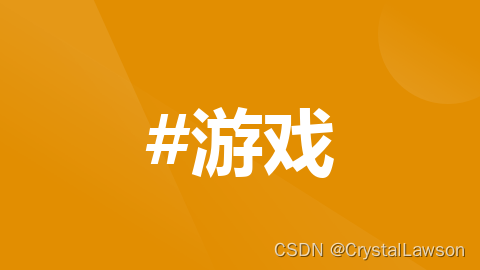
Python (使用Flask框架)yangzhie289.com
Python的后端代码可能如下所示(仅为示例,不是完整应用):
python
from flask import Flask, request, jsonify
app = Flask(name)
假设的游戏商品列表
games = [
{“id”: 1, “name”: “Game 1”, “price”: 9.99},
{“id”: 2, “name”: “Game 2”, “price”: 19.99},
# …
]
@app.route(‘/games’, methods=[‘GET’])
def get_games():
return jsonify(games)
@app.route(‘/games/int:game_id’, methods=[‘GET’])
def get_game(game_id):
for game in games:
if game[‘id’] == game_id:
return jsonify(game)
return jsonify({‘error’: ‘Game not found’}), 404
… 其他路由,如购买游戏、更新库存等
if name == ‘main’:
app.run(debug=True)
JavaScript (使用Node.js和Express框架)
Node.js的后端代码可能如下所示:
javascript
const express = require(‘express’);
const app = express();
const port = 3000;
// 假设的游戏商品列表
let games = [
{id: 1, name: ‘Game 1’, price: 9.99},
{id: 2, name: ‘Game 2’, price: 19.99},
// …
];
app.get(‘/games’, (req, res) => {
res.json(games);
});
app.get(‘/games/:gameId’, (req, res) => {
const gameId = parseInt(req.params.gameId);
const game = games.find(game => game.id === gameId);
if (game) {
res.json(game);
} else {
res.status(404).json({error: ‘Game not found’});
}
});
// … 其他路由
app.listen(port, () => {
console.log(App listening at http://localhost:${port});
});
Java (使用Spring Boot)
Java的Spring Boot后端代码可能涉及多个文件,但这里是一个简化的Controller示例:
java
import org.springframework.web.bind.annotation.*;
import java.util.Arrays;
import java.util.List;
@RestController
@RequestMapping(“/games”)
public class GameController {
// 假设的游戏商品列表
private List<Game> games = Arrays.asList(
new Game(1, "Game 1", 9.99),
new Game(2, "Game 2", 19.99),
// ...
);
@GetMapping
public List<Game> getGames() {
return games;
}
@GetMapping("/{gameId}")
public Game getGame(@PathVariable int gameId) {
for (Game game : games) {
if (game.getId() == gameId) {
return game;
}
}
throw new ResourceNotFoundException("Game not found");
}
// ... 其他方法,如购买游戏、更新库存等
// 假设的游戏类
static class Game {
private int id;
private String name;
private double price;
// 构造器、getter和setter方法...
}
// 异常类(可选)
static class ResourceNotFoundException extends RuntimeException {
public ResourceNotFoundException(String message) {
super(message);
}
}
}
请注意,这些示例仅涵盖了游戏商城的基本CRUD(创建、读取、更新、删除)功能中的“读取”部分,并且是非常简化的。一个完整的游戏商城将需要更多的功能,如用户认证、购物车管理、支付集成、库存管理、订单跟踪等。此外,前端部分(如使用HTML、CSS和JavaScript构建的网页)也是必不可少的。由于直接生成一个完整的游戏商城代码在多种编程语言中是不切实际的,我将为你提供一个简化的概念或框架,并分别用几种流行的编程语言(如Python、JavaScript、Java)给出一些关键部分的示例。
Python (使用Flask框架)
Python的后端代码可能如下所示(仅为示例,不是完整应用):
python
from flask import Flask, request, jsonify
app = Flask(name)
假设的游戏商品列表
games = [
{“id”: 1, “name”: “Game 1”, “price”: 9.99},
{“id”: 2, “name”: “Game 2”, “price”: 19.99},
# …
]
@app.route(‘/games’, methods=[‘GET’])
def get_games():
return jsonify(games)
@app.route(‘/games/int:game_id’, methods=[‘GET’])
def get_game(game_id):
for game in games:
if game[‘id’] == game_id:
return jsonify(game)
return jsonify({‘error’: ‘Game not found’}), 404
… 其他路由,如购买游戏、更新库存等
if name == ‘main’:
app.run(debug=True)
JavaScript (使用Node.js和Express框架)
Node.js的后端代码可能如下所示:
javascript
const express = require(‘express’);
const app = express();
const port = 3000;
// 假设的游戏商品列表
let games = [
{id: 1, name: ‘Game 1’, price: 9.99},
{id: 2, name: ‘Game 2’, price: 19.99},
// …
];
app.get(‘/games’, (req, res) => {
res.json(games);
});
app.get(‘/games/:gameId’, (req, res) => {
const gameId = parseInt(req.params.gameId);
const game = games.find(game => game.id === gameId);
if (game) {
res.json(game);
} else {
res.status(404).json({error: ‘Game not found’});
}
});
// … 其他路由
app.listen(port, () => {
console.log(App listening at http://localhost:${port});
});
Java (使用Spring Boot)
Java的Spring Boot后端代码可能涉及多个文件,但这里是一个简化的Controller示例:
java
import org.springframework.web.bind.annotation.*;
import java.util.Arrays;
import java.util.List;
@RestController
@RequestMapping(“/games”)
public class GameController {
// 假设的游戏商品列表
private List<Game> games = Arrays.asList(
new Game(1, "Game 1", 9.99),
new Game(2, "Game 2", 19.99),
// ...
);
@GetMapping
public List<Game> getGames() {
return games;
}
@GetMapping("/{gameId}")
public Game getGame(@PathVariable int gameId) {
for (Game game : games) {
if (game.getId() == gameId) {
return game;
}
}
throw new ResourceNotFoundException("Game not found");
}
// ... 其他方法,如购买游戏、更新库存等
// 假设的游戏类
static class Game {
private int id;
private String name;
private double price;
// 构造器、getter和setter方法...
}
// 异常类(可选)
static class ResourceNotFoundException extends RuntimeException {
public ResourceNotFoundException(String message) {
super(message);
}
}
}
请注意,这些示例仅涵盖了游戏商城的基本CRUD(创建、读取、更新、删除)功能中的“读取”部分,并且是非常简化的。一个完整的游戏商城将需要更多的功能,如用户认证、购物车管理、支付集成、库存管理、订单跟踪等。此外,前端部分(如使用HTML、CSS和JavaScript构建的网页)也是必不可少的。





















 1万+
1万+

 被折叠的 条评论
为什么被折叠?
被折叠的 条评论
为什么被折叠?








